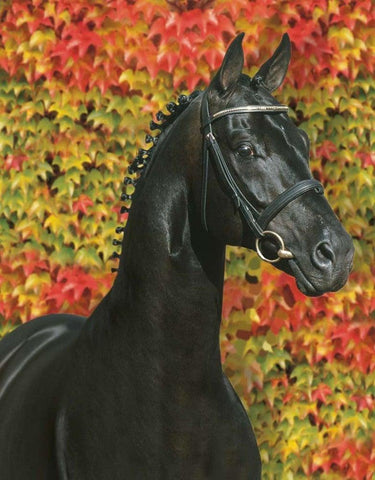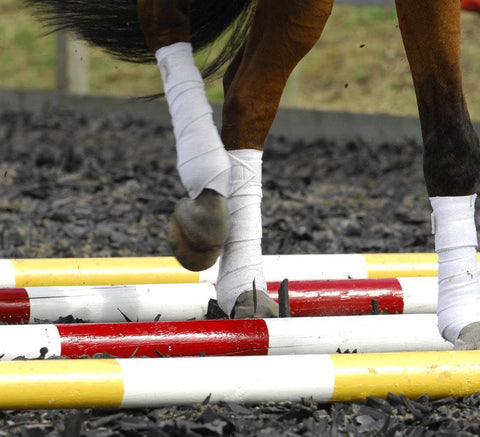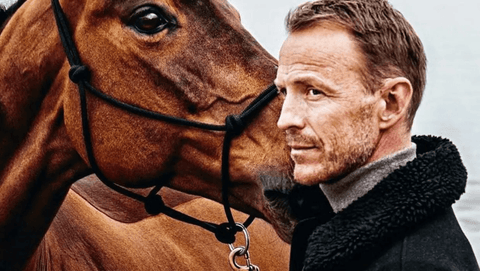3 Jumping Exercises For Small Arenas
We look at how to make the most of small practice spaces...
Tired of seeing Jumping exercises for arenas with seemingly endless space to canter to your heart’s content?
Well, while you might be a little jealous of those picture perfect show-worthy arenas (and we can’t blame you!), there’s something to be said for jumping in small spaces.
If you’ve ever watched shows in Europe, some of the indoor arenas even at top-level shows are much smaller than you’d expect.
With the right exercises, jumping in a small arena will help you to ride better turns, use your space, and develop quick reactions in your horse. Then, when you get to a show everything will feel easy.
For those of you riding in Dressage-sized or smaller spaces, here are some Jumping exercises for small arenas…
1. Choose Your Ride
Here’s an exercise you can ride in multiple directions on a variety of different horses by changing the heights and deciding how many jumps to link together.
By setting up a rectangle in the middle, you have a one stride going down lengthwise, and a bounce going across the width of the rectangle. You can use this to change rein over from any direction.
At each corner of the rectangle is an upright placed at a 45-degree angle. When ridden together, you can do these four jumps on a circle.
However, there are also lots of other options. You can jump them as single fences, jump one and loop back to the next (as shown in the diagram below), or pick one side of the rectangle and ride a straight line between the two fences, meaning you will meet each jump at an angle.

2. Grids and Lines
Line One
There’s nothing like a grid or line to get your horse using himself and to improve style and technique in both horse and rider. While you can’t build huge grids with long distances in between them, you can still build some simple lines which will help your horse.
For even the smallest of arenas, here is a jumping exercise that can be used for all levels.
Set up a Swedish oxer in your arena with a ground pole right in the centre of the oxer. Now, measure a one stride distance (which can be ever so slightly short) to a crosspole on either side. This can be jumped in both directions and will help to get your horse to the base of the oxer and jump up powerfully. The cross on either side allows you to jump in either direction, sets the horse up for the correct distance to the oxer on approach, and helps them to land and canter away powerfully while staying straight.
You can start small but one of the positives about this exercise it that the oxer can get fairly large without trouble.
Line Two
For your second grid in limited space, you’re going to build jumps in a Y shape, giving you options to go either left or right. This helps you to maintain straightness and accuracy, and ensures your horse is paying attention.
At one end of the arena near where A or C would be, set up two small bounces as crosspoles (or uprights for more advanced horses), followed by a one stride to a bigger upright. From here, you will set up two oxers, at the ‘arms’ of the Y shape. Three strides from the upright to the oxer is ideal but if your space is even tighter, you can make do with two.

As you come down the line, make sure to look at the oxer you’re planning on riding to. Aim to land on the correct leg and ride over smoothly. You will have more than one choice of line to the fence which gives you a few options on the ride you choose especially if you have space for three strides.
After landing, you can also loop back and jump the upright followed by the bounces. In this instance if you had jumped the oxer on the left, you would land after the oxer going right, come down the middle between the two oxers, and jump the remaining three fences on a straight line. Depending on space, you can even jump the oxer on the left, land right and then continue on to jump the other oxer from the opposite direction.
3. Courses and Turns
We love lines, but getting practice in linking fences together, taking the right approach to a fence, and turning for jump offs or speed rounds are all important in making sure that you’re prepared for your next show.
Practicing full courses in small arenas means two things; making sure you can jump most fences both ways, and making full use of your diagonals.

Here’s an example of a course you could set up in a small, rectangular (or close to it!) arena. Each fence has a corresponding number, although you could easily change this or add on to it. Generally, you would start the course with fence 1 or fence 6 in the below example.
______
Original text in FEI Academy





